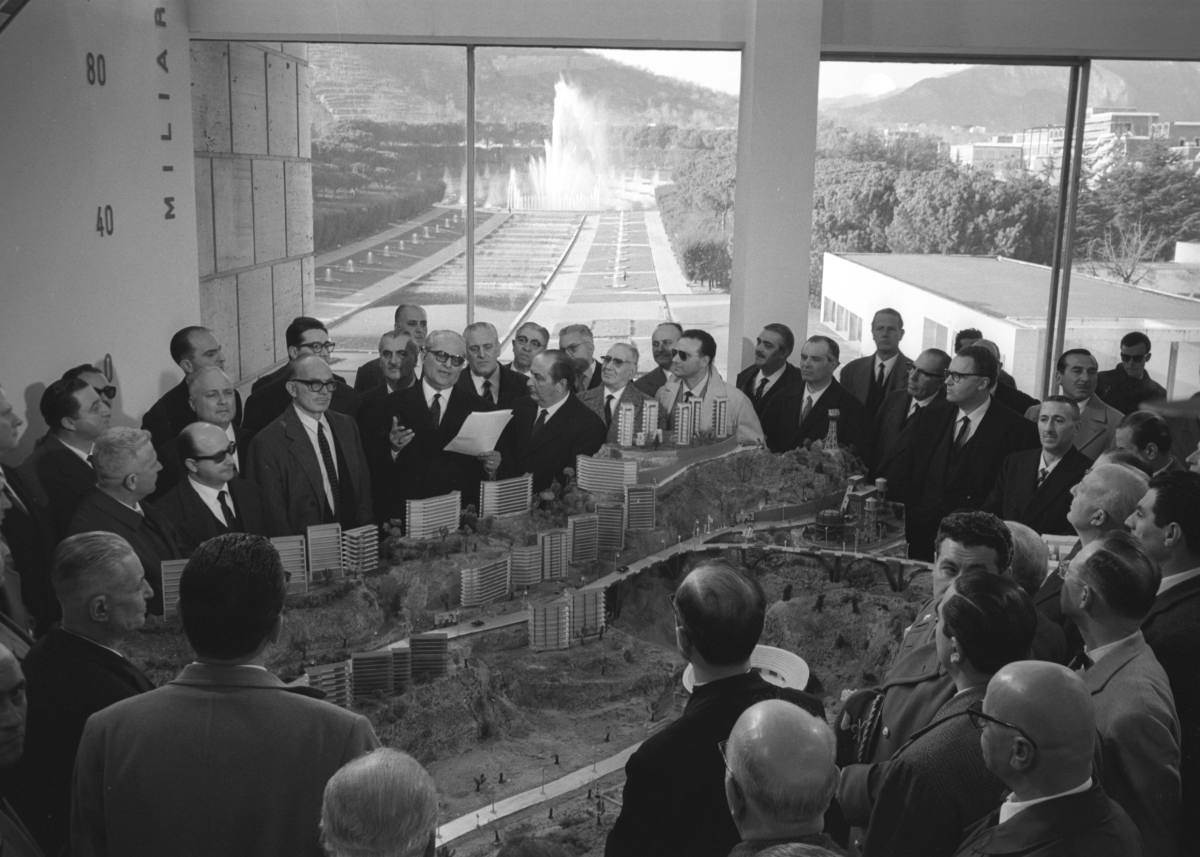
The recent death of movie director Francesco Rosi and the relevance of his ”Le Mani sulla Città” [Hands over the City, 1963] on the theme of urban speculation has been largely commented. From the point of view of architects, beside its artistic merits, ”Hands over the City” is a powerful reminder of the forces that, in some circumstances, shape the urban environment. In the case of the post-war reconstruction in Italy, and the subsequent ‘economic boom’, the speculation implied political corruption and a certain degree of complicity, to say the least, of those in charge of the design.
At the same time, however, architects were also part of a remarkable season of [mostly public] housing schemes, that produced some undisputed urban masterpieces with their endowment of great buildings.
The topic is fascinating but apparently obsolete: the time when someone was still shaping the city, producing large drawings and models as those the movie shows, is over.
Since private interests are more pervasive than ever, political corruption is still there and once again the ‘technicians’ are in the background, absent or accomplice. It is a fact that urbanism and urban design, particularly at our latitude, are neglected disciplines too often segregated to administration/registration roles, in strict conjunction with the forces that hire them.
Big names refrain to get involved with the design of the city and they usually concentrate on the design of objects, much easier to be photographed. With suspect cynicism someone has also made a sort of manifesto of the impossibility to regulate urban phenomena and of a poetic of the urban laissez-faire, the natural complement of economic deregulation.
The idea to treat the city and the spoon as extremes of the same discourse, and to affirm the opportunity to rule their form, use and access, belong to the myth.
Obviously this is an oversimplification: there are [isolated] examples of subjects that still believe in the need to design the city. But these are exceptions, and the topic is now different from what appeared fifty years ago, especially in this part of the world.
The paradox is that the places that form the backdrop of “Hands over the City” as well as one of the characters and many of the issues of the movie may, as a matter of fact, become the subject of a new, contemporary movie: the selective substitution of the existing urban landscape of the so called periferie [outskirts, more a social than a geographical definition], the transformation of industrial areas in new opportunities, the definitive conversion of the obsolete car-oriented model of expansion. etc. All that requires a new politics for human settlements. Sustainable, of course….
Even if architects might seem too weak or narcissist for such a challenge, they should at least try to put their hands over the city.
RV
Hands over the City
The recent death of movie director Francesco Rosi and the relevance of his ”Le Mani sulla Città” [Hands over the City, 1963] on the theme of urban speculation has been largely commented. From the point of view of architects, beside its artistic merits, ”Hands over the City” is a powerful reminder of the forces that, in some circumstances, shape the urban environment. In the case of the post-war reconstruction in Italy, and the subsequent ‘economic boom’, the speculation implied political corruption and a certain degree of complicity, to say the least, of those in charge of the design.
At the same time, however, architects were also part of a remarkable season of [mostly public] housing schemes, that produced some undisputed urban masterpieces with their endowment of great buildings.
The topic is fascinating but apparently obsolete: the time when someone was still shaping the city, producing large drawings and models as those the movie shows, is over.
Since private interests are more pervasive than ever, political corruption is still there and once again the ‘technicians’ are in the background, absent or accomplice. It is a fact that urbanism and urban design, particularly at our latitude, are neglected disciplines too often segregated to administration/registration roles, in strict conjunction with the forces that hire them.
Big names refrain to get involved with the design of the city and they usually concentrate on the design of objects, much easier to be photographed. With suspect cynicism someone has also made a sort of manifesto of the impossibility to regulate urban phenomena and of a poetic of the urban laissez-faire, the natural complement of economic deregulation.
The idea to treat the city and the spoon as extremes of the same discourse, and to affirm the opportunity to rule their form, use and access, belong to the myth.
Obviously this is an oversimplification: there are [isolated] examples of subjects that still believe in the need to design the city. But these are exceptions, and the topic is now different from what appeared fifty years ago, especially in this part of the world.
The paradox is that the places that form the backdrop of “Hands over the City” as well as one of the characters and many of the issues of the movie may, as a matter of fact, become the subject of a new, contemporary movie: the selective substitution of the existing urban landscape of the so called periferie [outskirts, more a social than a geographical definition], the transformation of industrial areas in new opportunities, the definitive conversion of the obsolete car-oriented model of expansion. etc. All that requires a new politics for human settlements. Sustainable, of course….
Even if architects might seem too weak or narcissist for such a challenge, they should at least try to put their hands over the city.
RV
Tags: